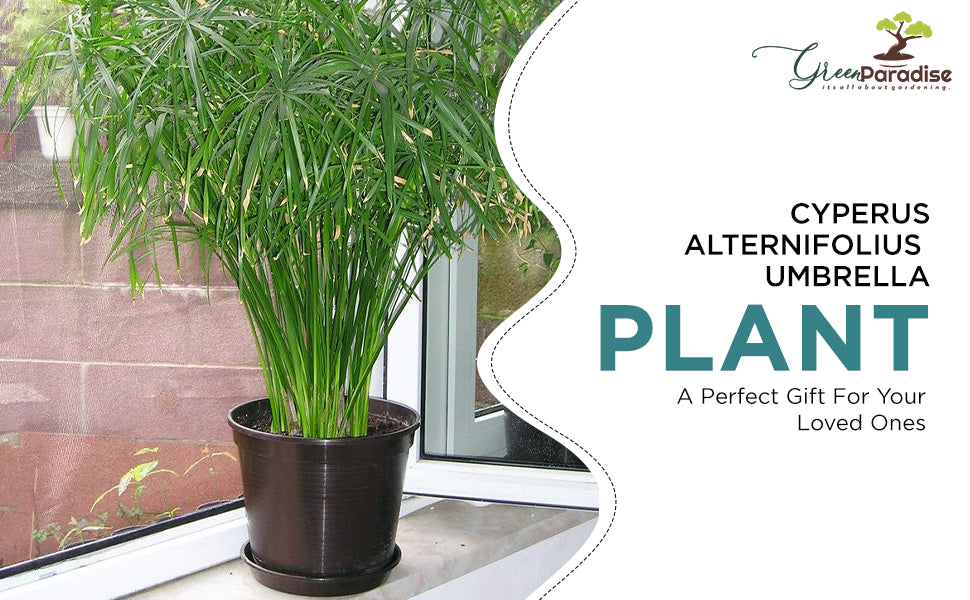


Unveiling the Elegance: The Allure of
Cyperus Alternifolius as an Indoor Plant
Bringing Nature's Grace Indoors with Cyperus
Alternifolius
In the bustling world we inhabit, finding solace in the tranquility of nature is becoming increasingly vital. This has led to a surge in the popularity of indoor plants, not merely as decorations but as living companions that purify the air and rejuvenate our living spaces. Among the myriad of options, Cyperus alternifolius, often referred to as Umbrella Papyrus or Umbrella Plant, stands out as an exceptional choice, encompassing both aesthetic allure and environmental benefits.
Unveiling the Elegance of Cyperus Alternifolius
- Cyperus Alternifolius: a name that exudes an air of mystery and elegance.
- Native to Madagascar, this distinctive plant is part of the Cyperaceae family, a botanical lineage known for its grass-like species.
- The standout feature of Cyperus alternifolius is its unique arrangement of leaves that resemble the spokes of an umbrella, lending the plant its common name.
- These lush green umbrellas not only imbue an immediate tropical feel but also provide a visual spectacle that soothes the beholder.
- The plant's growth pattern is equally fascinating. Cyperus alternifolius starts as a compact plant but, over time, develops into a graceful clump of arching stems, forming an umbrella-like canopy.
- This evolution can be observed and appreciated, making it a captivating addition to any indoor setting.
Cyperus Alternifolius as an Indoor Companion
- The benefits of incorporating Cyperus alternifolius into your indoor living space go beyond aesthetics.
- This plant is renowned for its air-purifying qualities, effectively removing pollutants and enhancing air quality.
- Its presence can contribute to a healthier and more vibrant atmosphere, particularly in rooms with limited ventilation.
- Caring for Cyperus alternifolius is relatively uncomplicated, making it an excellent choice for both novice and seasoned plant enthusiasts.
- It thrives in moist environments, which can be easily achieved by placing the plant's pot in a water-filled saucer.
- Indirect sunlight is ideal for its growth, although it can tolerate some degree of shade.
- This versatility ensures that the plant can find its place in various corners of your home.
The Therapeutic Effect
- Beyond the visual and environmental advantages, Cyperus alternifolius offers a sense of tranquility to indoor spaces.
- The act of nurturing a living being, even in the form of a potted plant, has been proven to have therapeutic effects, reducing stress and promoting mindfulness.
- Its presence connects us to the natural world, even when confined within four walls.
The Green Paradise Guide to Cultivating Cyperus
Alternifolius: A Flourishing Indoor Delight
Indoor plants not only bring a touch of nature into our living spaces but also contribute to cleaner air and enhanced aesthetics. Among the plethora of indoor plants available, Cyperus alternifolius stands out for its unique appearance and relatively low maintenance requirements. Also known as Umbrella Grass or Umbrella Plant, Cyperus alternifolius is a remarkable addition to any indoor plant collection. In this guide, we will delve into the essentials of cultivating and nurturing this distinctive plant to ensure its healthy growth and vibrancy.
Choosing the Right Location
- Cyperus alternifolius thrives best in bright, indirect light.
- It is crucial to find the right spot for your plant where it can receive sufficient light without being exposed to harsh, direct sunlight.
- An east-facing window or a spot a few feet away from a south or west-facing window can provide the ideal lighting conditions for this plant.
- Remember that the intensity of light decreases as you move farther from the window, so it's important to strike the right balance.
Ideal Temperature and Humidity
- Maintaining an appropriate temperature and humidity level is key to the well-being of your Cyperus alternifolius.
- Aim for temperatures between 60 to 75 degrees Fahrenheit (15 to 24 degrees Celsius) during the day and slightly cooler at night.
- These conditions mimic the plant's natural habitat and promote healthy growth.
- Additionally, Cyperus alternifolius thrives in higher humidity environments, making it beneficial to occasionally mist the plant with water or use a humidity tray to prevent the tips of its delicate leaves from drying out.
Watering Routine
- A steady watering routine is vital for the prosperity of your Cyperus alternifolius. Always keep the ground damp but not drenched.
- It's advisable to water the plant once the top inch of the soil feels dry to the touch.
- However, avoid letting the plant sit in standing water, as this can lead to root rot.
- Consider using a pot with good drainage to prevent water accumulation.
The Art of Fertilization
- Feeding your Cyperus alternifolius with the right nutrients can make a significant difference in its growth.
- During the growing season, which typically spans from spring to early autumn, use a balanced, water-soluble fertilizer every four to six weeks.
- Dilute the fertilizer to half the recommended strength to avoid over-fertilization, which can harm the plant.
- In the dormant winter months, you can reduce the frequency of fertilization to once every two months.
Repotting and Maintenance
- As your Cyperus alternifolius matures, it might outgrow its current pot.
- Repotting every couple of years, preferably in the spring, can provide the plant with fresh soil and more room to grow.
- When repotting, choose a container that is only slightly larger than the current one, as these plants prefer to be a bit root-bound.
Dealing with Common Issues
- Yellowing or browning of leaves can indicate improper watering or inadequate humidity.
- Adjust your care routine accordingly.
- If you notice the growth becoming leggy or the plant leaning excessively, it might be a sign that it's not receiving enough light.
- Move it to a brighter spot to rectify this issue.






